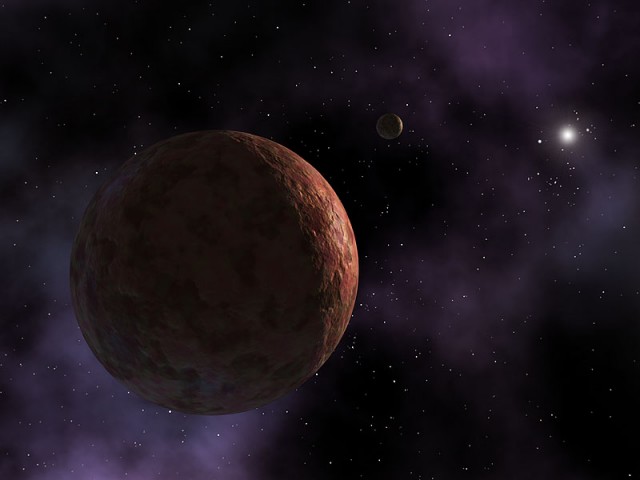New dwarf planet found sneaking through the inner Oort Cloud
Ars Technica » Scientific Method 2014-03-26

A new dwarf planet-like body has been found on the outer edges of the Solar System. This object, called 2012VP113, is about 450km wide and is the second body of its class found since the identification of the dwarf planet Sedna in 2003, and it joins an exclusive club composed of some of the strangest objects in the Solar System.
The observable Solar System can be divided into three regions: the rocky terrestrial planets and asteroids of the inner Solar System, the gas giant planets, and the icy Kuiper Belt objects, which include Pluto. The Kuiper Belt stretches from beyond Neptune, which is at 30 astronomical units (where 1AU is the typical distance between the Earth and the Sun), to about 50AU.
Sedna and 2012VP113 are strange objects because they reside in a region where there should be nothing, according to our theories of the Solar System formation. Their orbit is well beyond that of Neptune, the last recognized planet of the Solar System, and even beyond that of Pluto, which differs from planets because of its size, unusual orbit, and composition. (Pluto, once considered a planet, is now considered the lead object of a group of bodies called plutinos.)
Read 11 remaining paragraphs | Comments